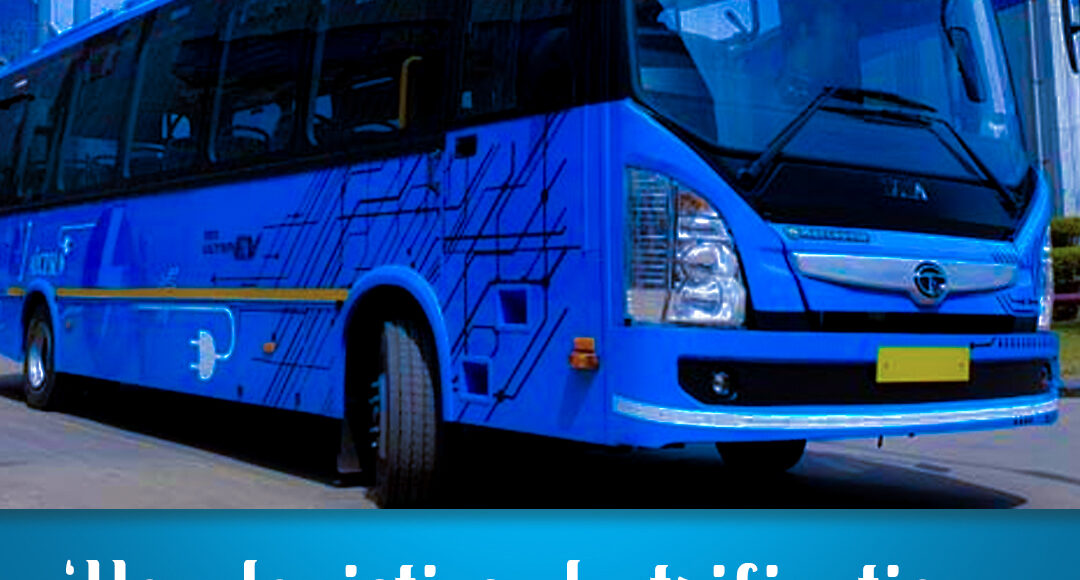
How logistics electrification will serve India
How logistics electrification will serve India :
Once an underdog, electric vehicles (EVs) will soon become a much-loved vehicle in India’s trucking sector. The numbers prove it, with the sector recording unprecedented sales of around 100,000 EVs in 2022 and 2.78 lakh EVs in the first quarter of 2023, according to electric vehicle sales data from Vahan data repository of the Government of India.
Advantages of electric vehicles in logistics :
The popularity of electric vehicles has increased in the logistics sector in India, due to its ability to reduce operating costs, increase efficiency and reduce emissions from the tailpipe.
In addition, because electric vehicles help remove carbon during last-mile deliveries – this is the final stage of the delivery process from the distribution center to the customer’s doorstep – many companies specialize in logistics would love to integrate them into their delivery team. According to industry estimates, at least 80,000 electric two-wheelers have been added to India’s last-mile delivery two-wheeler fleet with around 5,000 vehicles by 2022, In addition, supported by India’s efforts In order to meet climate targets, government subsidies and policies that encourage the purchase of electric vehicles also play an important role in increasing sales of electric vehicles in the logistics sector.
Under Indian government policy, policy think tank NITI Aayog, India can reduce logistics costs by 4% of the country’s GDP and save 10 billion tons of carbon dioxide emissions by 2030 through clean technology like electric mobility.
According to the Center for Science, Technology and Policy Research, about 70% of India’s goods are transported by road, mainly by large vehicles that depend on fossil fuels. CSTEP) . In addition, the trucking sector accounts for 54% of the country’s carbon emissions; and this percentage is expected to increase with the growing popularity of e-commerce.
Some challenges and proposed solutions.
Overcoming charging infrastructure limitations with EV-friendly roads
Currently, charging infrastructure is limited in India. As a result, logistics electric vehicles can be deployed at locations with charging points or on accessible routes with a single battery charge. That said, the Ministry of Road Transport and Highways plans to develop highways suitable for electric vehicles, with regular charging stations, so this challenge will be overcome soon.
Reducing high upfront costs through government policies and incentives
The initial purchase price of electric vehicles is significantly higher than that of fossil fuel vehicles. However, under India’s FAME – II program to promote electric mobility, buyers can get a direct discount on the cost of an electric vehicle.Thus, reducing upfront costs through government incentives and commercial vehicle policies could help incentivize logistics companies to replace their fleets with electric vehicles.
Charge EV batteries with electricity from renewables rather than fossil fuels
Although using EVs may not pollute the air, electricity generated from fossil fuels is used to power power them. Therefore, any logistics company that is serious about going “green” should consider switching to renewable energy to charge their electric vehicle fleet. With 40% of India’s installed energy capacity coming from non-fossil fuels, measured by GDP, this could soon be a reality.
Develop alternative batteries to solve logistics EV battery problems.
The key component of an EV, the battery, is not only expensive but also large in size, limiting storage in delivery vehicles. Electric vehicles also take longer to start up than conventional vehicles, which increases delivery times. Developing solutions to address these challenges could further encourage logistics-dependent companies to switch to electric vehicles.
The growth and sustainability of electric vehicles in the logistics sector in India depends on the country’s ability to develop smaller, efficient and affordable electric vehicle batteries using raw materials local communities while also generating cleaner energy and the necessary infrastructure to support them.

Leave a Comment